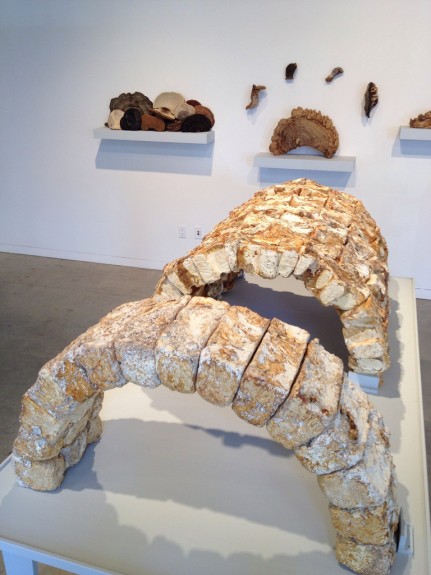One Day, Your House And Everything in It Could Be Made of Mushrooms
Houses, car parts, furniture—it could be a very mushroom-filled future

This chair was made from fungus bricks. Photo: mangtronix
The rise of modernist design in the late 19th century was an aesthetic movement emboldened by the arrival of new construction materials, such as plastic and molded wood—developments that encouraged the manufacture of furniture with a smooth, sleek, minimalist look. In a similar vein, Philip Ross, a chef and artist now based in San Francisco, is forging a new look by harnessing an unlikely new construction material: fungus.
Feeding it agricultural waste, Ross grows each prototype onsite in an ultra-controlled environment, using a mold, filtered air, gravity, and pressure to achieve the shape: An armchair took two weeks to grow. Then he kiln-dies them, leaving little or no odor and a texture similar to high-density foam or cork.
By combining the fungal growth with other materials, Ross makes things like tables and chairs. But Ross is not the only person harnessing the potential of fungi. The company Planetary One, says Inhabitat, wants to use fungus bricks to build houses.
The team at Planetary One is harnessing this process to grow the material in molds using organic cellular material for food. Their prototypes utilize the North American species Ganoderma lucidum, which they placed in a mold with a mixture of oak pellet fuel, wheat bran, gypsum, and hydrogen peroxide to produce a fine matrix of material with structural properties conducive for use as a construction material. They created a replica of the New Museum in only ten days to demonstrate the quick-growing bio-building blocks.
With furniture and maybe even buildings themselves accounted for, the fungal design revolution is far from over. Polystyrene packaging, made as a by-product of oil production, could be replaced with mushroom-derived packaging, says Wired UK. The mushroom-as-styrofoam shift could even carry over into automobile design, says Jess Zimmerman for Grist. Maybe one day, when we’re all living in formerly-alive houses grown on our organic wastes, furniture bearing a straight-edged, sleek, modern aesthetic will look just as out of place as anything not made out of particleboard does today.
More from Smithsonian.com:
Robots Will Soon Assemble Your Ikea Furniture for You
Finding Feisty Fungi in Antarctica
/https://tf-cmsv2-smithsonianmag-media.s3.amazonaws.com/accounts/headshot/smartnews-colin-schultz-240.jpg)
/https://tf-cmsv2-smithsonianmag-media.s3.amazonaws.com/accounts/headshot/smartnews-colin-schultz-240.jpg)